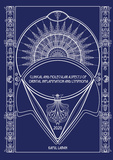Clinical and molecular aspects of orbital inflammation and lymphoma

Laban, Kamil
- Promoter:
- Prof.dr T.R.D.J. (Tim) Radstake & prof.dr J.H. (Joke) de Boer
- Co-promoter:
- Dr R. (Rachel) Kalmann & dr J.J.W. (Jonas) Kuiper
- Research group:
- Radstake , Boer Kuiper
- Date:
- June 18, 2020
- Time:
- 14:30 h
Summary
Background and purpose: In the eye-socket and around the eye (orbit), several diseased can occur. Two important diseases, non-Hodgkin orbital lymphoma (NHOL) and idiopathic orbital inflammation (IOI) can be difficult to diagnose, as they have many similarities. In this research project, we aim to improve several aspects of the diagnostic process and investigate underlying mechanisms of the diseases, which can have great impact on patient care.
Methods: Using medical data, imaging, blood and diseased-tissue, similarities and differences between NHOL and IOI were investigated.
Most important results: For new cases of NHOL and IOI, 5 factors were found that can be used to aid in early differentiation. This was confirmed in an independent group of patients. A new scan (89Zr-rituximab PET/CT) was found to have potential in aiding the diagnostic process of IOI and may predict an effective treatment. In blood, a cluster of 8 microRNA’s were increased in both diseases compared to healthy controls, and specific dendritic cells were found to have a previous underappreciated role in these diseases. Tissue examination with a new technique has potential to complement tissue diagnostics and may result in the development of powerful diagnostic tools that are less invasive.
Conclusion: This project resulted in new insights in the diagnostic process and underlying mechanisms of NHOL and IOI, with applications that can be implemented in clinics and developments that can be used for future research.